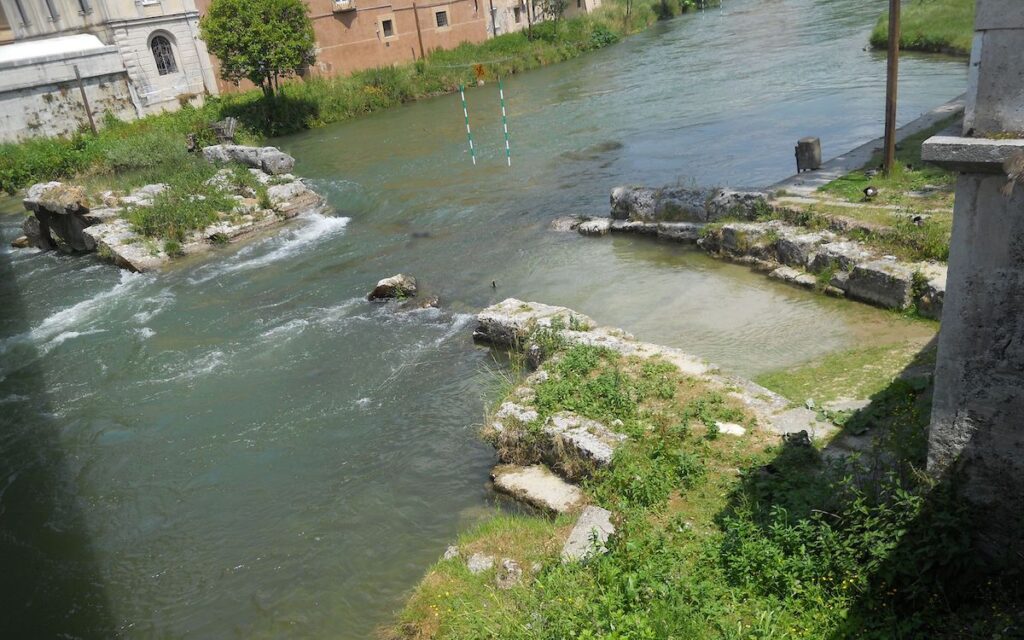Romans were great road builders. They mainly built dead straight roads from A to B to minimize distances for military, political and commercial reasons. Some of these roads, which are more than 2.000 years old, still exist today and thus give a good impression of the quality that the ancient Romans strived for.
An example of this is the Via Emilia, which connects Piacenza to Rimini in Emilia-Romagna and celebrated its 2.200th anniversary last year.
At the height of the Roman Empire, the Roman road network covered a whopping 400.000 kilometers (80.000 of which were paved), with as many as 29 roads leading from Rome to connect the rest of Italy (hence the expression 'all roads lead to Rome') and connecting many others covering all areas of the empire from Britain to Mesopotamia. (An American statistics student once made a metro map of the Roman Empire.)
The streets were equipped with milestones, which indicated the distance in miles from the "golden milestone", located in the Roman Forum, at the foot of the Capitol. The length of a Roman mile was about 1.478 meters.
Here are the 5 main Roman roads that you can still walk, cycle or drive on. They do not always really look like a Roman road, but remnants of a rich past can still be found everywhere and they follow the original route.
1. Via Appia

The Via Appia connected Rome with Toast (Brundisium) in southern Italy. Built between the late 4th and early 3rd centuries, it was also referred to as 'regina viarum' (queen of roads) and was considered one of the greatest structures of the ancient world due to its enormous economic, military and cultural impact it had on Roman society.

Brindisi was one of the most important ports in Italy at the time, connecting with the trade routes to Greece and the East. Large parts of the road, especially in the outskirts of Rome, are well preserved.
In Rome you can see part of the Via Appia by one park-like environment misuse. There you will find remnants of more than 2.000 years old monuments. In our City GuideRome you will find a nice cycling route around the Via Appia Antica.
2. Via Salaria

The Via Salaria was a consular road that ran from Rome to Porto d'Ascoli on the Adriatic Sea. The road also passed through Reate (Rieti) and Asculum (Ascoli Piceno). Today the road is classified as 'strada statale' (state road) SS 4. Unlike all other consular roads, which got their name from the person responsible for their construction, the name Salaria derives from the function for which the road was built. built: the transport of salt.

3. Via Emilia

The Via Aemilia ran from Ariminum (Rimini) on the Adriatic coast to Placentia (Piacenza) on the Padus (Po) River. The road was completed in 187 BC. In Rimini there was a connection with the Via Flaminia to Rome, which had been completed 33 years earlier.

Named after the Roman consul Marcus Aemilius Lepidus, this route passed through the main cities of the region, such as Forlì, Faenza, Bologna, Modena, Reggio and Parma, as it still does today: it is state road 9, still called Via Emilia and largely follows the ancient Roman route. The first bridge of the road still exists, just outside Rimini.

4. Via Aurelia

The Via Aurelia was a consular road built in the middle of the 3rd century BC. was built to connect Rome to Cerveteri, and later extended to reach the military colonies of Cosa and Pyrgi on the Tyrrhenian coast. Today, the route connects Rome to France along the Tyrrhenian Sea and the Ligurian Sea.


5. Via Cassia

The Via Cassia was an important consular route connecting Rome with Florentia (Florence), later expanded to connect to the Via Aurelia via Lucca and Pistoia.

Of ancient roads and modern travellers
These ancient Roman roads are not only a historical heritage, but also serve as important (holiday) routes for modern travelers passing through Italy. They still today offer a glimpse of the grandeur and craftsmanship of ancient Rome and appeal to history buffs and adventure seekers alike.
Along these roads you will follow in the footsteps of ancient armies, traders and travelers while enjoying the breathtaking scenery and rich history they have to offer. Be enchanted by the legacy of Roman civilization as you walk the same stone paths that were built there thousands of years ago.
Discover the mighty Via Appia, experience the 'salty' history along Via Salaria, admire the cultural treasures along Via Emilia, explore the coastline via Via Aurelia and be enchanted by the Tuscan landscape on Via Cassia.
The Roman roads are waiting for you, ready to take you on a journey through time.
Sources: Wikipedia, italymagazine.com










Comments